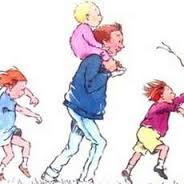Before attending our drama seminar on Tuesday the 9th of December we were advised to read ‘Connecting drama and Writing: seizing the moment to write’ by Teresa Cremin.Throughout the article it is explained that children are becoming more and more disengaged in class and that drama should be used to enhance learning as it will make it more fun and enjoyable. At the beginning of the seminar we did some warm up games. It was explained to us by the lecturer that when she goes in to schools to teach drama, all the pupils’ are slumped over their desks bored so to get them energised she will carry out some warm up games.
Cremin et al (2006) explains that drama is and should be used as a way ‘to facilitate creativity and imagination in all subject areas.‘ Throughout the seminar we focused on the subject of sustainable development. The lecturer brought in a painting that she felt we could relate to which was the ‘Glasgow Crest’.
The crest consists of a bird that never flew, a tree that never grew, a bell that never rang and a fish that never swam. We were split in to four groups and each given a drawing that related to to the themes of the crest. The picture my group were given related to the fish that couldn’t swim. The painting was by Monet however Bansky had put his own original twist on to it to highlight the modern day river we can see.
Our lecturer asked each group to analyse their painting and come up with a piece of drama that related to it. Our group came up with many ideas and it was interesting to hear each persons’ view. We came to the decision that this scene would be most associated with drunk and careless individuals who would think it would be a ‘good laugh’ to steal trollies and throw them in the river which would not only pollute the river put destroy the scenery. According to Cremin et al (2006) if children are acting they are having more fun which would overall make the learning more fruitful. My group enjoyed practising our piece of drama and when watching the other groups perform it really helped us understand all the different issues that can be linked to the economy regarding pollution, recycling, deforestation and destruction of wildlife. By taking part in this piece of drama enabled us to understand more about sustainable development as we now know that by acting carelessly can have bigger repercussions than we think. I believe that drama should be implemented in to all areas of the curriculum as it would allow children to delve deeper in to the subject area. A topic such as sustainable development can be quite difficult to grasp, however by using drama to enhance the learning can help pupils understand it more as they are physically acting situations out using their imaginations and creativity which makes the learning more enjoyable.
Before coming to this lecture I had always felt nervous about the prospect of teaching drama, however, after attending this lecture my confidence has grown. I now realise that when teaching drama and the other areas within the Integrated Arts, the pupils creativity development is at the forefront and we as the teachers must encourage and prompt them.



































